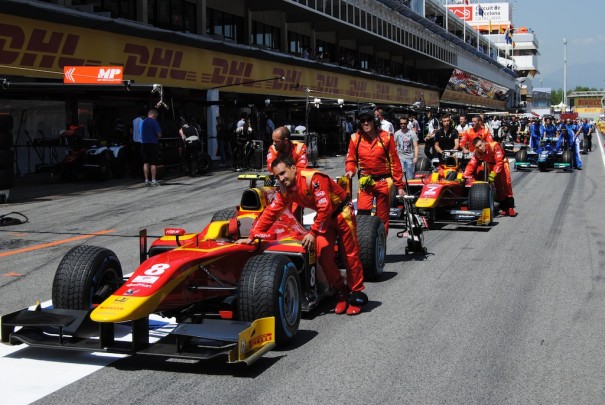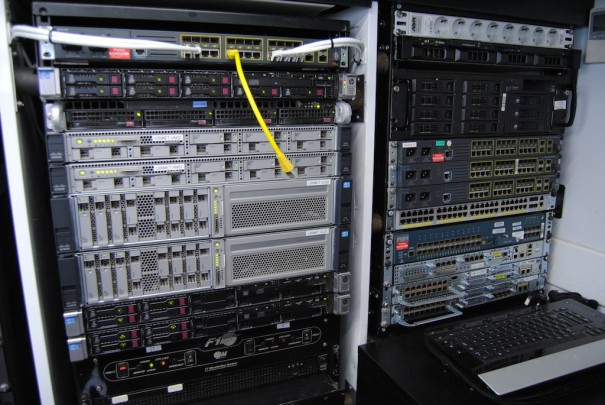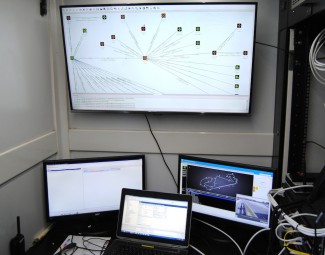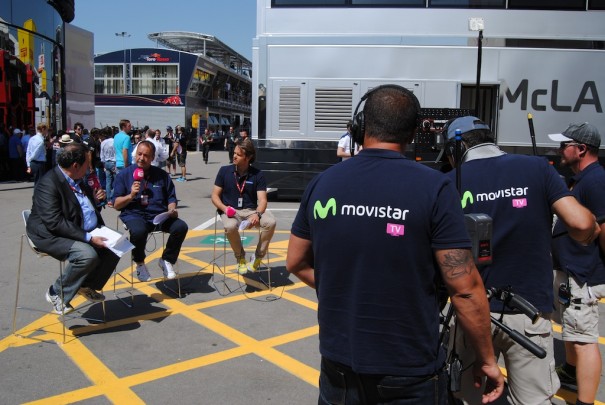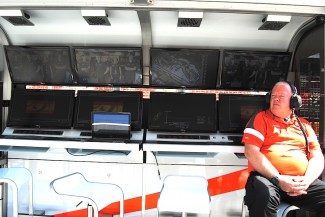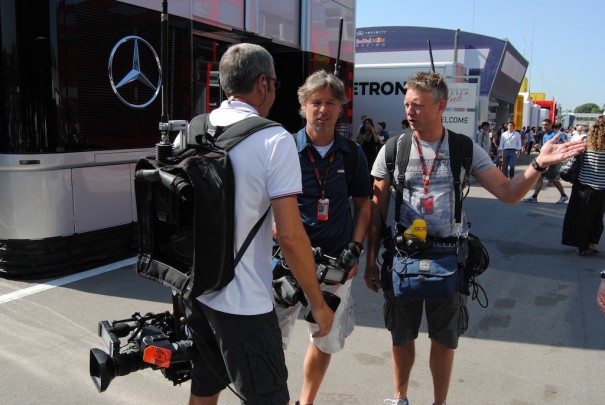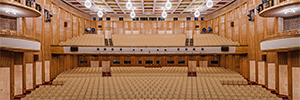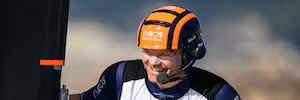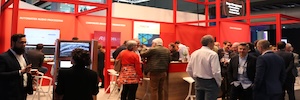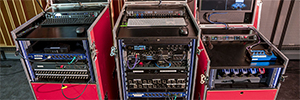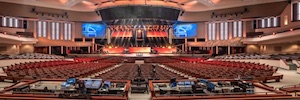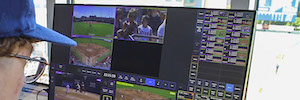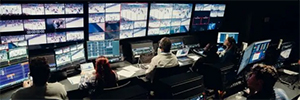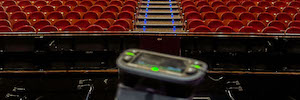Riedel Connects Formula 1 with maximum safety, Reliability and flexibility
Formula One Management, Formula One Administration, the Fédération Internationale de l'Automobile and the teams' teams use Riedel systems in intercom, TETRA integration, and audio streaming, video and data during the Formula One World Championship.
The story of Riedel runs parallel to the rise of Formula 1 worldwide for more than two decades now. Both in the beginnings of a modest German company, founded by Thomas Riedel, found in the Formula 1 the springboard it needed for its strongest commitment to R+D, and by the International Automobile Federation (FIA), who saw Riedel as the perfect technology partner to facilitate communications and video data traffic, Audio & Network, Riedel's engine and technology have been intimately linked since 1993.
The Formula World Championship 1, which is held from March to the end of November on five continents, It poses endless challenges year after year due to the difference in climates, tough transport conditions and a hectic schedule to move tons of equipment.
One of the most complex aspects in these tests is communication and AV radio links since the usual oversaturation of the spectrum, and the disparity of criteria for its management makes RF a headache that only robust communications systems such as those of Riedel can guarantee an optimal level of quality in any radio or environmental situation.
All Communications in Formula 1 are carried out using Riedel's Artist panels and digital matrix. Both Formula One Management (FOM), Formula One Administration (FOA), the International Automobile Federation (FIA) and the teams' teams use these Riedel systems. Artist's interface is seamlessly integrated with digital radio TETRA systems 1800 UNSIT de Motorola.
The TETRA network combines the advantages of analogue trunk radio with digital mobile communication, maximising spectrum usage while achieving the highest transmission quality in both voice and data, maximum protection against interference and illegal eavesdropping and the possibility of creating networks and connections with flexible management.
In addition, A digital radio trunked system allows for full-duplex communication, GPS Positioning, and connection to the public telephone network. The system offers the option to operate different virtual channels and take advantage of IP connectivity to interconnect other systems.
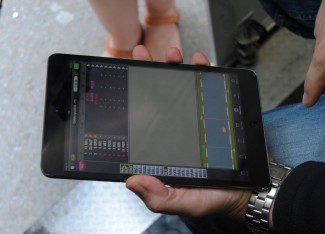 Artist systems are not only used by the FIA in the organisation of each race, since they are also used by Formula One Management (FOM), that produces the official broadcast signal.
Artist systems are not only used by the FIA in the organisation of each race, since they are also used by Formula One Management (FOM), that produces the official broadcast signal.
Twenty Riedel engineers travel to the venue where each race is held to ensure that everything runs smoothly. Most of these engineers regularly accompany the teams both in the day-to-day work at their respective locations and in their international travels.
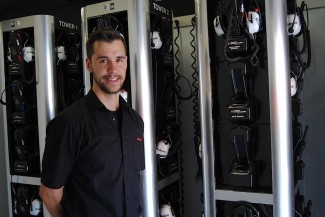 One of these technicians, Mateo Giusti, that accompanies the Sahara Force India F1 Team, comments to Panorama Audiovisual that "both engineers, Drivers and other technical staff of each team need to maintain very clear and immediate communications. A tenth-of-a-second miss can mean the difference between winning or losing. We have to take into account that in the 80% how long a race lasts, The drivers are talking to their team".
One of these technicians, Mateo Giusti, that accompanies the Sahara Force India F1 Team, comments to Panorama Audiovisual that "both engineers, Drivers and other technical staff of each team need to maintain very clear and immediate communications. A tenth-of-a-second miss can mean the difference between winning or losing. We have to take into account that in the 80% how long a race lasts, The drivers are talking to their team".
In addition to a saturated spectrum, both the FIA and the teams have to fight in their communications with high ambient noise that sometimes exceeds the 130 dB, so signal fidelity is key. Stand out in this aspect, which for maximum security and redundancy, The pilots have both digital and analogue intercom. Giousti also points out that "the use of Riedel's Artist panels is due to, in addition to its great reliability and flexibility, that they are the only ones that allow their use in direct sunlight and in the most extreme environmental conditions".
Riedel offers this same digital radio system to security and medical personnel, as well as the drivers of the safety car. Safety is a primary concern in F1 and the ability to communicate with security personnel throughout the circuit is vital.
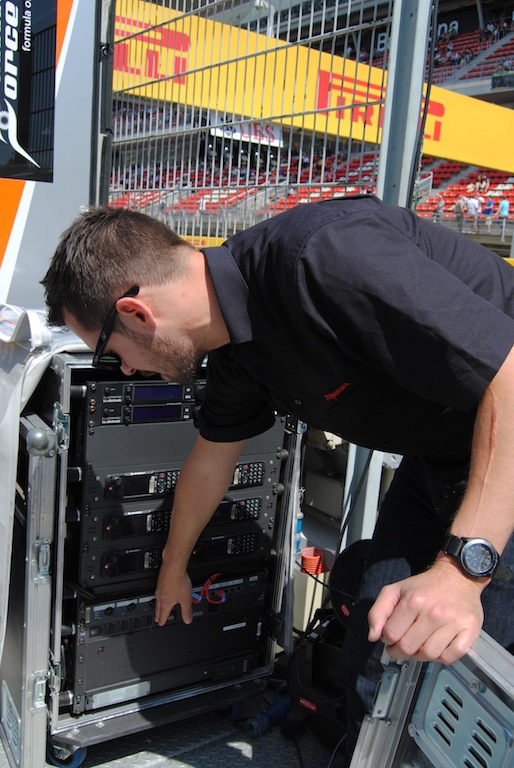 The signals handled by the FIA and the teams themselves are routed to a radio base station with three antennas (two receivers and one transmitter).
The signals handled by the FIA and the teams themselves are routed to a radio base station with three antennas (two receivers and one transmitter).
These signals are then routed via Riedel's RiLink international fibre service to a data centre in Frankfurt (which serves as a hub for its operations for the whole world), Staying available for consultation 24/7 throughout the year for both broadcasters and FIA personnel and the teams themselves.
Through a high-performance telecommunications network (MPLS) running on RiLink, technical and support staff from both the teams and the FIA itself can communicate from anywhere immediately with a delay of just 300 milliseconds from abroad and alone 10 more in Europe.
For this season, the FIA has authorised each team to transfer a total of 60 professionals to the circuit where the event is held. All of them are, thanks to Riedel technology, in continuous communication with the 250 Technical, doctors and support staff who follow the race from their own headquarters.
It should also be noted that Riedel is also collaborating in Formula Medicine's communications. Under the direction of Riccardo Ceccarelli, This team manages health care, mental and physical of a good number of Formula teams 1.
For the video, both FOM and FIA use Riedel's MediorNet systems, and permanent and temporary fiber networks, to access and distribute signals. At the same time, MediorNet allows you to route HD signals from 22 closed-circuit cameras deployed on each circuit for security.
Riedel's Artist intercom systems and RockNet audio network systems are combined into a MediorNet network to build a complete streaming infrastructure that can be managed remotely. As it is a fibre network, Each signal is available at each node and in the event of a failure in any of the fibers it breaks or disconnects, The system directly re-routes the signals avoiding failure.
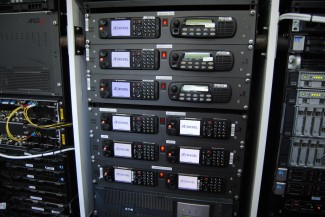 Riedel's RiLink network provides bidirectional links between the circuit and broadcasters with broadcast rights, which allows not only the transport of 3G signals / HD / SDSDI, but also have video return, Full-duplex communications, VoIP telephony and IP data.
Riedel's RiLink network provides bidirectional links between the circuit and broadcasters with broadcast rights, which allows not only the transport of 3G signals / HD / SDSDI, but also have video return, Full-duplex communications, VoIP telephony and IP data.
In addition, RiLink provides high-bandwidth connections, which translates directly into better video quality. RiLink's latency is also significantly shorter and its transmission is completely independent of weather conditions. Multiple layers of redundancy within the network provide maximum reliability and QoS for this network in real-time.
The heart of all the technical deployment that Riedel puts in place every Formula season 1 we find it in the so-called "Command Center". It is a large flyway box equipped with all communications systems and video network, Audio and Data. The unity, Fully redundant in terms of signals and power supply with its own electronic group, contains an Artist Matrix of 128 Ports and multiple servers (with up to 60 TB) loaded with a management software developed by Riedel itself.
All radio signals reach this center, TETRA, GPS, Intercom, Video Security, Broadcast multi-camera, telemetry... being stored so that at any time during the race itself or throughout the season both FIA and team personnel can access it. All this information can be followed in real time remotely or on the circuit itself using a simple iPad.
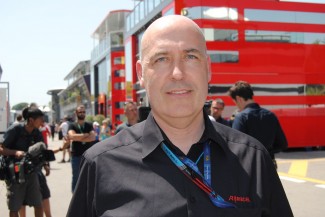 Dario Rossi, at the helm of the Motorsport division at Riedel, stresses that "we use for each career between 10 and 14 kilometers of fiber that we install and uninstall for each Grand Prix. That fiber is then divided into specific channels for each of the racing teams.". Part of this fiber network, It is also used for intercom and data transport, to deliver signals to the Tv Compound.
Dario Rossi, at the helm of the Motorsport division at Riedel, stresses that "we use for each career between 10 and 14 kilometers of fiber that we install and uninstall for each Grand Prix. That fiber is then divided into specific channels for each of the racing teams.". Part of this fiber network, It is also used for intercom and data transport, to deliver signals to the Tv Compound.
From this season, Riedel is using Neutrik's MTP OpticalCON connectors, which has accelerated network deployment with complete connection fail-safe security.
On the other hand, Rossi admits that the MediorNet network "has radically changed the way in which signals are managed and compressed. It is worth remembering that many of Riedel's developments began with the need to offer the FIA the most advanced technology, From there, our systems have become accessible to the entire market".
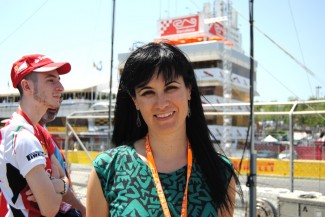 Maribel Román, Sales Director for Spain, He stresses for his part that "precisely, one of the characteristics that differentiates Riedel is its robustness and transport capacity, something that is evident when we observe all the deployment that each Grand Prix entails".
Maribel Román, Sales Director for Spain, He stresses for his part that "precisely, one of the characteristics that differentiates Riedel is its robustness and transport capacity, something that is evident when we observe all the deployment that each Grand Prix entails".
At the same time, it underlines Riedel's role as a solution provider, as well as manufacturer: "Riedel goes beyond the manufacture of die systems, intercom or networks as we also offer a comprehensive service for large events in which we include planning, System Installation and Operation. In addition, We deploy highly qualified and, even, We can develop tailor-made solutions". Last, acknowledges that "our objective in this type of major events and especially if safety is key as is the case with Formula 1, is to achieve absolute zero tolerance for errors in all communications and signal transport".
Riedel and RTL
One of the broadcasters with which Riedel has the closest collaboration in the coverage of Formula One is RTL, with whom he has been working for more than seven years. Thanks to the Riedel RiLink Global Fiber Service, the German broadcaster has two-way links between the different circuits and its headquarters in Cologne. In addition, the Artist and MediorNet platforms are used for intercom service and signal distribution.
The bidirectional links of the RiLink network between the different circuits and Cologne allow not only the transport of 3G signals / HD / SD-SDI, but also video return, Intercom Full-Duplex, VoIP telephony and IP data.
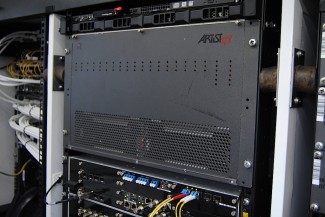 In addition, provides connections with a higher bandwidth than the usual satellite links, which translates into better video quality. RiLink's latency is also significantly shorter and its transmission is completely independent of weather conditions. Multiple layers of redundancy in the network provide maximum reliability and quality of service for this network in real time. An MPLS network (A high-performance telecommunications switching network) that runs alongside RiLink) it also allows RTL to have other business services such as exchange of material between servers, Intranet and intercom.
In addition, provides connections with a higher bandwidth than the usual satellite links, which translates into better video quality. RiLink's latency is also significantly shorter and its transmission is completely independent of weather conditions. Multiple layers of redundancy in the network provide maximum reliability and quality of service for this network in real time. An MPLS network (A high-performance telecommunications switching network) that runs alongside RiLink) it also allows RTL to have other business services such as exchange of material between servers, Intranet and intercom.
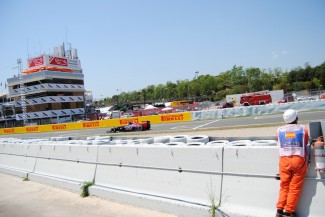 Every race weekend, RTL sends both the international program signal and other additional signals served by its ENG teams deployed to the circuit.
Every race weekend, RTL sends both the international program signal and other additional signals served by its ENG teams deployed to the circuit.
During off-peak hours when there is no signal transmission, RTL uses the additional capacity for other purposes, such as transferring files to its headquarters in Cologne, automatically or managed. Although real-time transport of HD video uses compression to reduce bandwidth, The peaks in these transfers are sustained without compressing their original quality. Sending uncompressed video is the usual option, for its part, to send the material to be used for the production of highlights, and high-quality post-production.
This entire workflow is based on the operability enabled by Riedel's Artist intercom system, which allows professionals at RTL's headquarters to collaborate with their colleagues thousands of kilometers away on any circuit in the world as if they were just ten meters away.
You liked this article?
Subscribe to our Feed And you won't miss a thing.



